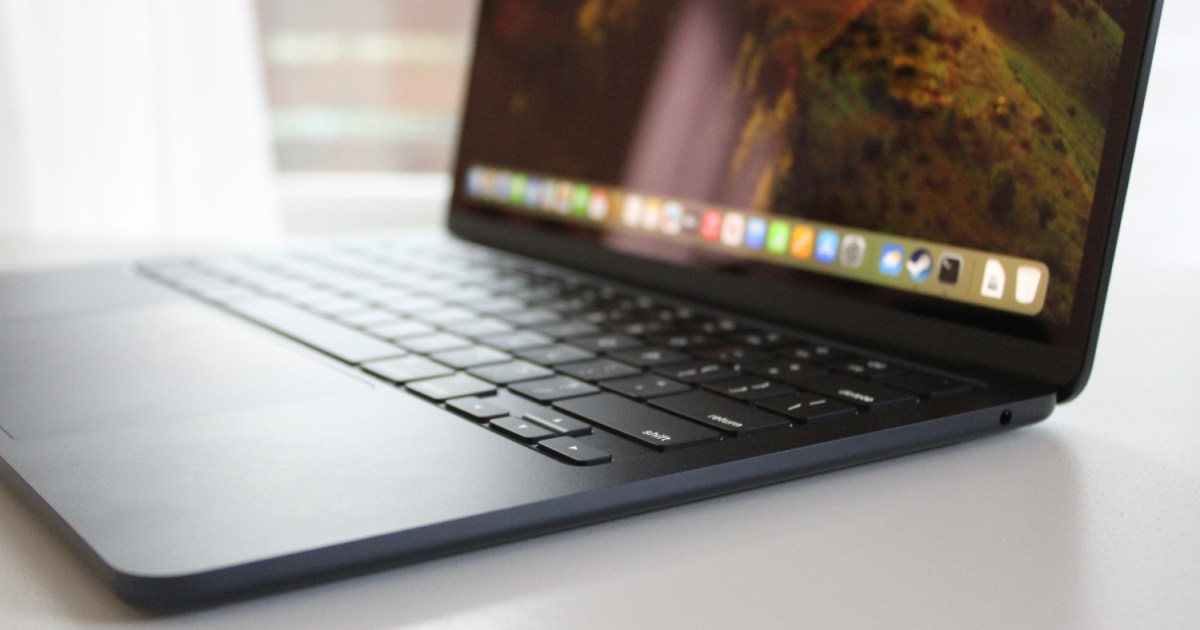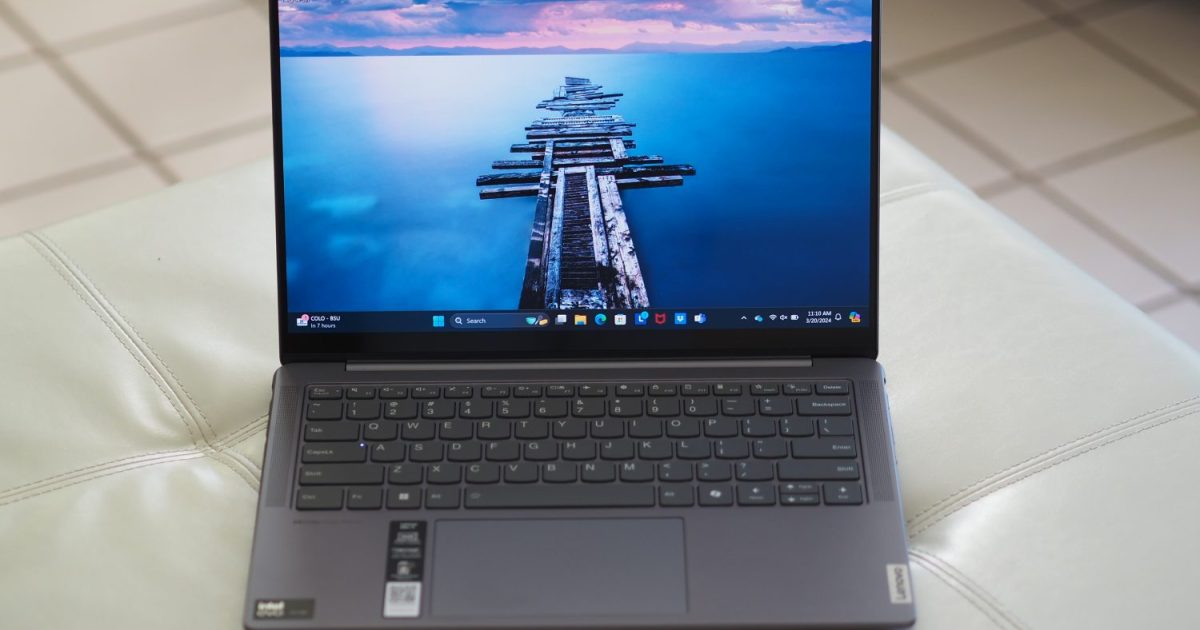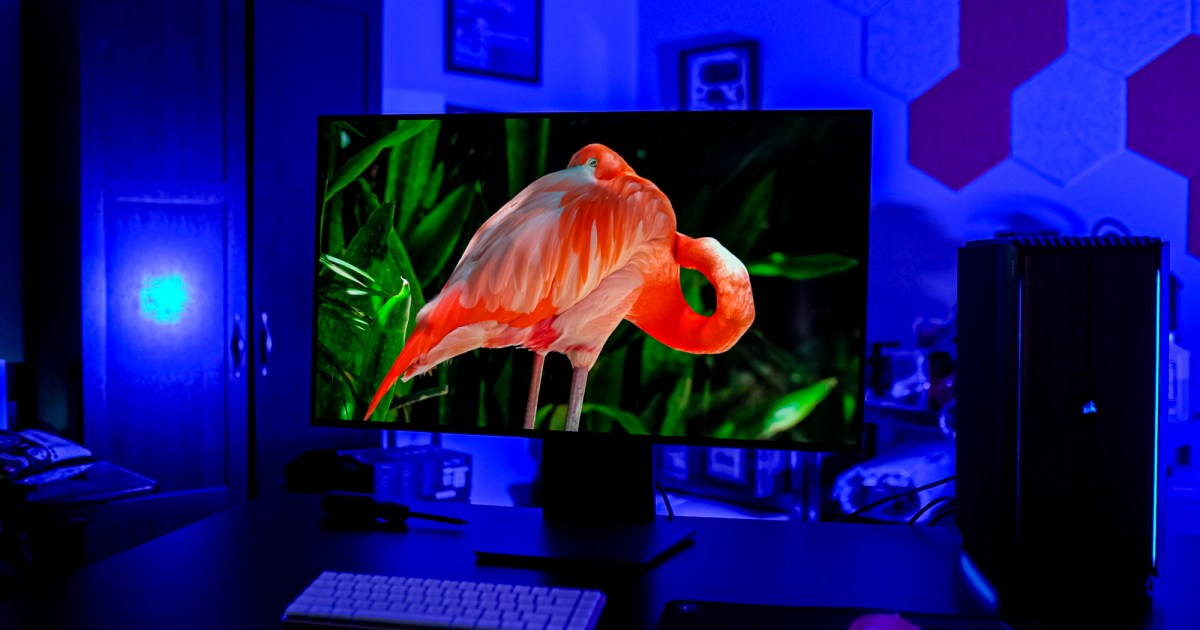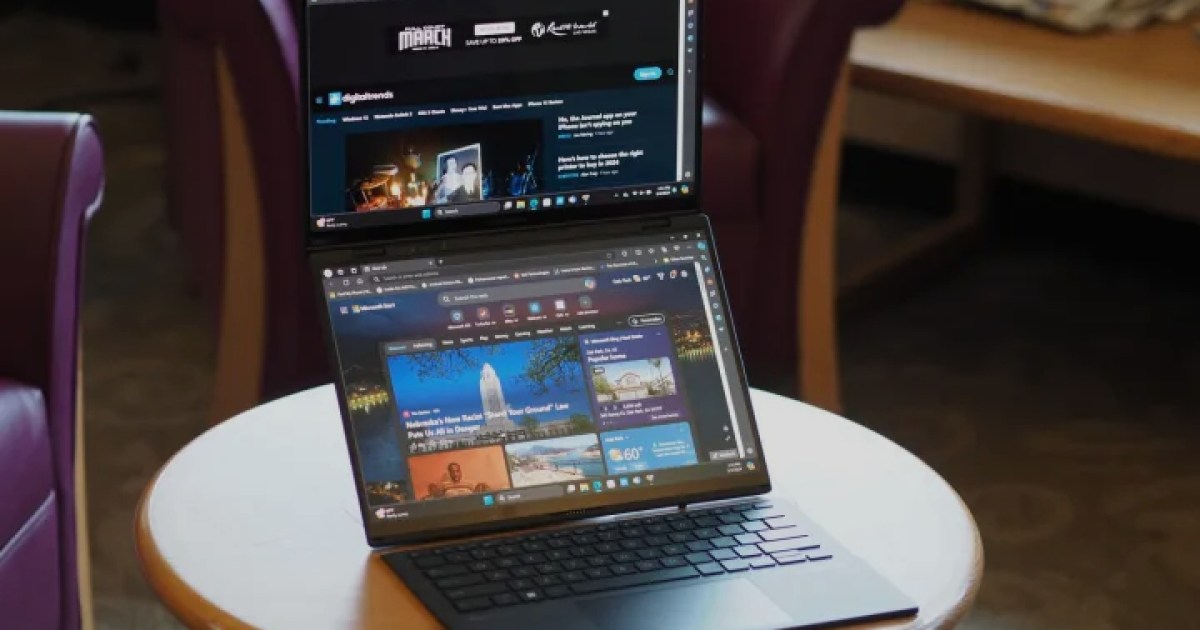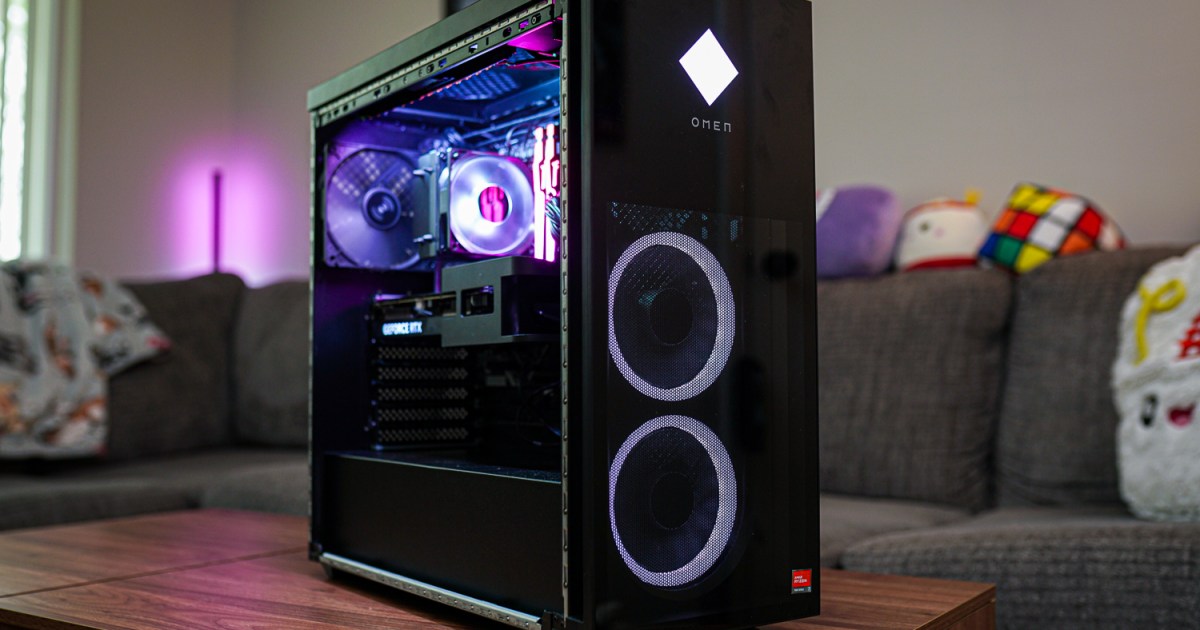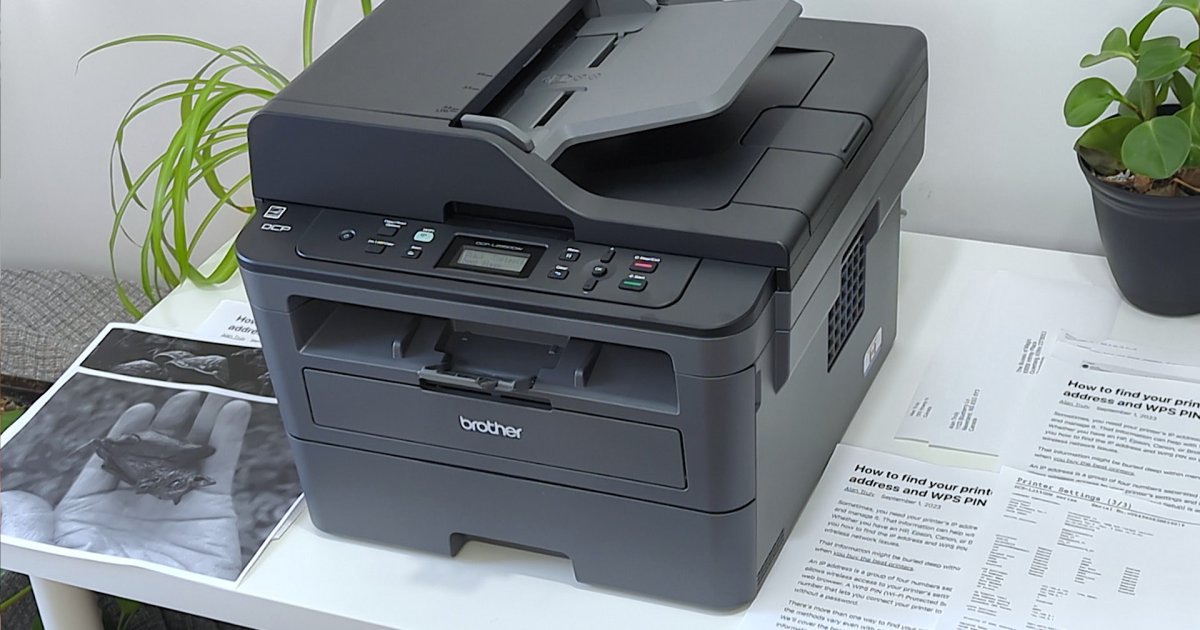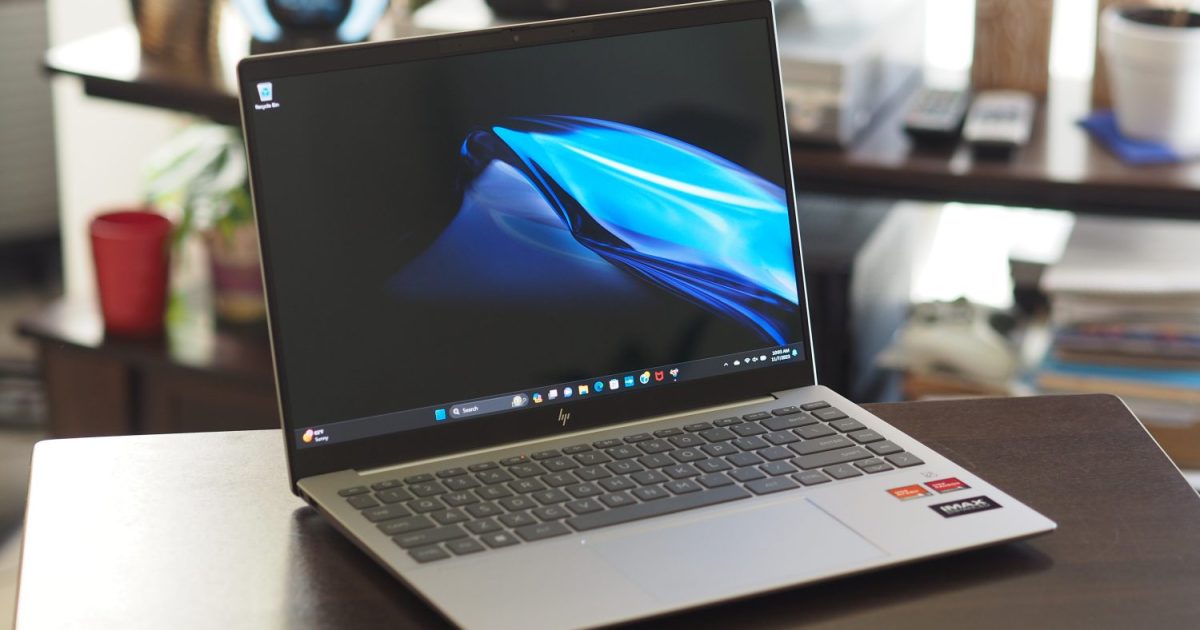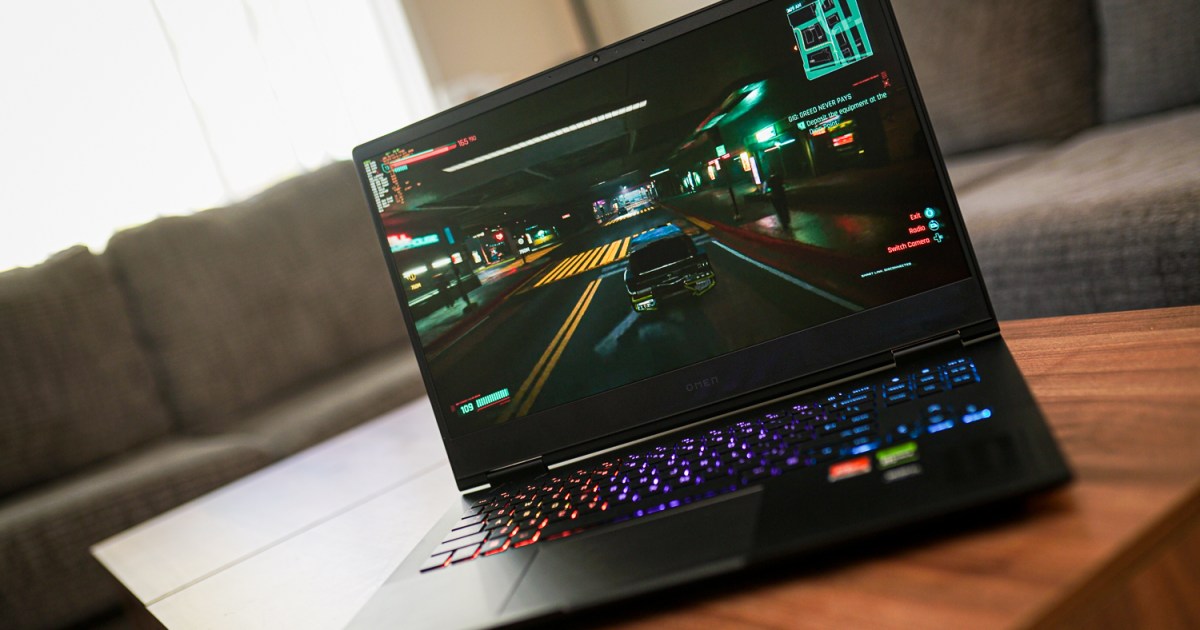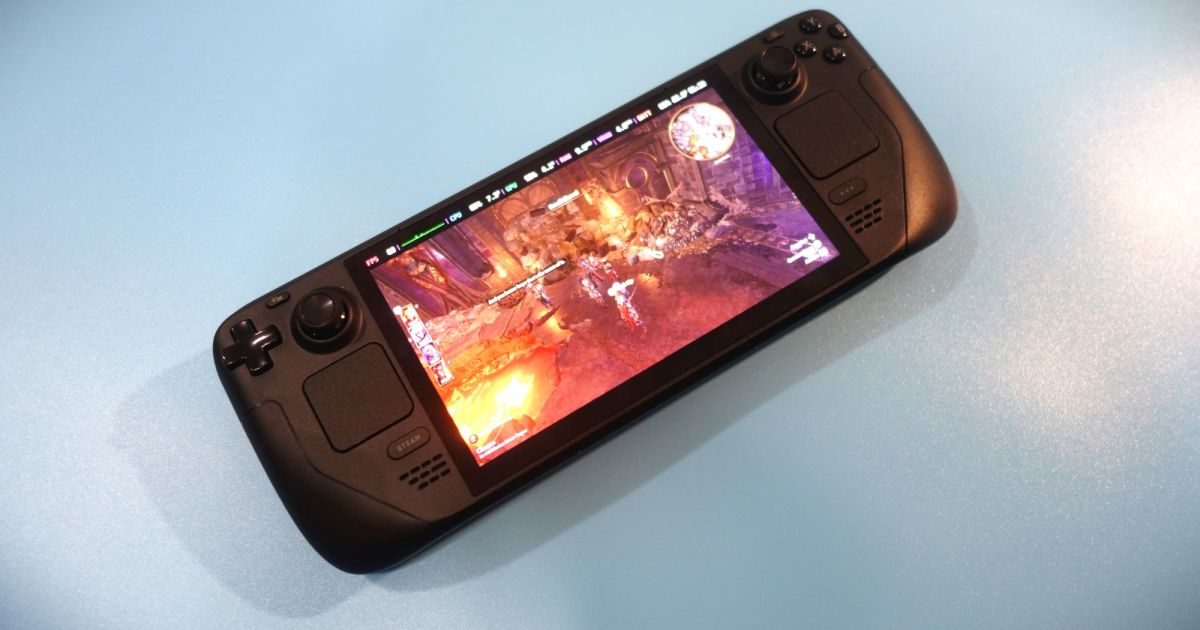The MacBook Air remains a global bestseller, a position it held before the M3 chip and likely will maintain. While the M3’s inclusion might seem incremental, especially with the discounted M2 model readily available, its impact, particularly on GPU performance, is remarkable. This review, updated for December 2024, explores why the M3 MacBook Air continues to be a leading laptop choice.
Introduction
This review, originally published in March 2024 upon the M3 MacBook Air’s release, has been updated to reflect significant changes in Apple’s configuration offerings. As of October 2024, both the M3 and M2 MacBook Air (13-inch and 15-inch) now start with 16GB of RAM, a substantial upgrade without a price increase. This generous memory boost, influenced by feedback on the M3 MacBook Pro and the rise of AI-powered features, makes the MacBook Air an even more compelling purchase. While discounted 8GB versions may still linger in the market, buyers should prioritize the 16GB models. With rumors of an impending M4 MacBook Air, this review also considers the timing of your purchase.
Updated RAM and Future Considerations
Apple’s decision to standardize 16GB RAM for the MacBook Air lineup, without raising the starting price of $1,099, is a significant win for consumers. This added memory future-proofs the device and aligns with the increasing demands of modern applications and operating systems, including Apple Intelligence and Microsoft’s Copilot+. While retailers are adjusting to this change, be cautious of older 8GB models unless significantly discounted. The upcoming M4 MacBook Air, potentially arriving in early 2025, is another factor to consider. However, current discounts on the M3 model make it a strong contender for those seeking immediate value.
Specifications and Pricing
| Feature | MacBook Air (M3) |
|---|---|
| Dimensions | 11.97 x 8.46 x 0.44 inches |
| Weight | 2.7 pounds |
| Processor | Apple M3 (8-core) |
| Graphics | 8-core GPU / 10-core GPU |
| RAM | 16GB / 24GB Unified Memory |
| Display | 13.6-inch 2560 x 1664 LED IPS (60Hz) |
| Storage | 256GB / 512GB / 1TB / 2TB SSD |
| Touchscreen | No |
| Ports | 2 x Thunderbolt 5 (USB-C), 1 x MagSafe 3, 1 x 3.5mm Audio Jack |
| Wireless | Wi-Fi 6E, Bluetooth 5.3 |
| Webcam | 1080p FaceTime HD Camera |
| Operating System | macOS Sonoma |
| Battery | 52.6 watt-hour |
| Price | Starting at $1,099 |
The M3 MacBook Air maintains the $1,099 starting price of its M2 predecessor, now offering 16GB RAM and a 256GB SSD. The 13-inch model offers a 10-core GPU option for an additional $100. The 15-inch model, starting at $1,299, includes the 10-core GPU and 16GB RAM. Both models can be configured with up to 24GB RAM and a 2TB SSD, exceeding $2,000. However, significant discounts are currently available, making the base configurations particularly attractive.
Design and Build
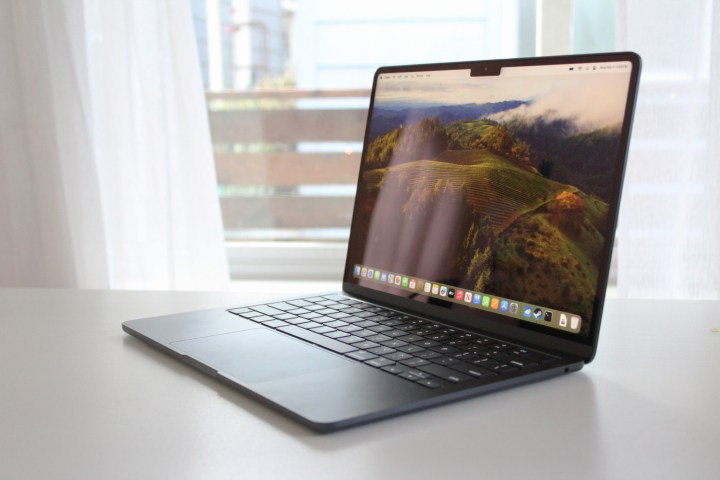 The M3 MacBook Air on a table in front of a window.
The M3 MacBook Air on a table in front of a window.
The MacBook Air’s design remains strikingly thin at 0.44 inches, a testament to Apple’s engineering prowess. While other thin and light laptops are catching up, the MacBook Air’s robust build quality sets it apart. Its rigidity prevents flexing, a common issue with ultra-thin devices. The new Midnight color option, previously introduced with the M3 MacBook Pro, adds a stylish touch, though fingerprint resistance may not be significantly improved. The excellent keyboard and trackpad, hallmarks of Apple laptops, continue to provide a comfortable and precise user experience.
Port Selection and Connectivity
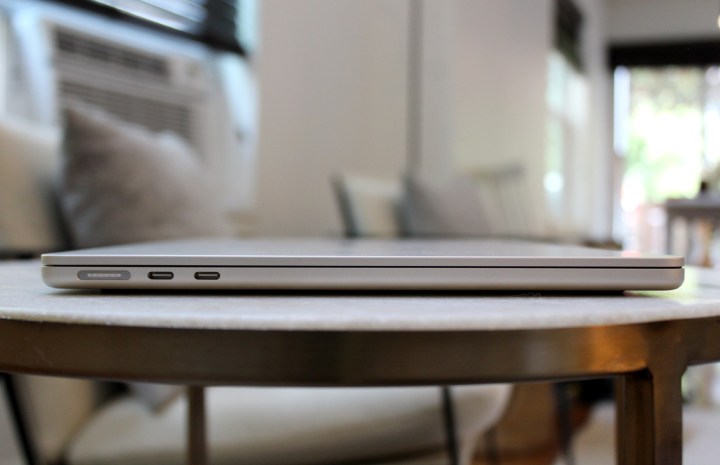 A side of the MacBook Air showing the ports.
A side of the MacBook Air showing the ports.
The MacBook Air’s port selection remains a point of contention. While the limitation to Thunderbolt 3 via USB-C is becoming more common, the restrictions on external displays are notable. The M3 model can support two external 5K displays at 60Hz, but only when the laptop lid is closed. This improvement over the M2’s single-display limit is helpful for static workstation setups but less so for active use with multiple monitors. The inclusion of MagSafe 3 and a headphone jack is welcome, though an additional USB-C port would enhance versatility. The updated Wi-Fi 6E and Bluetooth 5.3 ensure cutting-edge wireless connectivity.
Display Quality
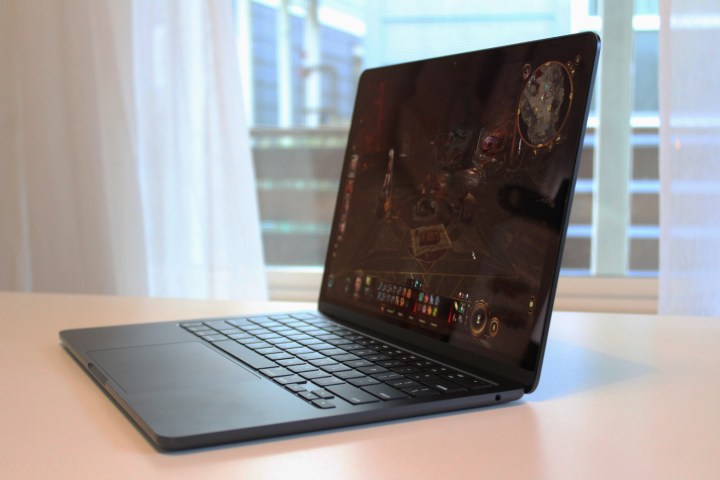 A side angle of the M3 MacBook Air with Baldur
A side angle of the M3 MacBook Air with Baldur
The 13.6-inch display with a 2560 x 1664 resolution offers excellent sharpness and vibrant colors. While lacking the advanced features of the MacBook Pro’s display, such as local dimming and a higher refresh rate, it delivers impressive brightness, reaching up to 495 nits. Color accuracy is good, though competing OLED displays in this price range offer superior contrast and wider color gamuts.
Performance Boost with the M3 Chip
While the M3’s CPU performance improvement over the M2 is modest (around 10-13%), its GPU performance is significantly enhanced, thanks in part to Dynamic Caching. This translates to a substantial boost in graphics-intensive tasks like video editing, 3D modeling, and even gaming.
| Benchmark | M3 MacBook Air | M2 MacBook Air | Asus Zenbook 14 (Core Ultra 7 155H / Arc) | Dell XPS 14 (Core Ultra 7 155H / RTX 4050) |
|---|---|---|---|---|
| Cinebench R24 (single/multi) | 141 / 601 | 122 / 542 | 103 / 493 | 101 / 681 |
| Cinebench R24 (GPU) | 3049 | 1737 | n/a | 5738 |
| Handbrake (seconds) | 109 | 119 | 86 | 84 |
| Pugetbench Premiere Pro | 3633 | n/a | 1583 | 3274 |
The M3’s GPU outperforms integrated Intel Arc graphics and even rivals dedicated GPUs like the RTX 4050 in certain tasks, as demonstrated by the Pugetbench Premiere Pro results.
Gaming Capabilities
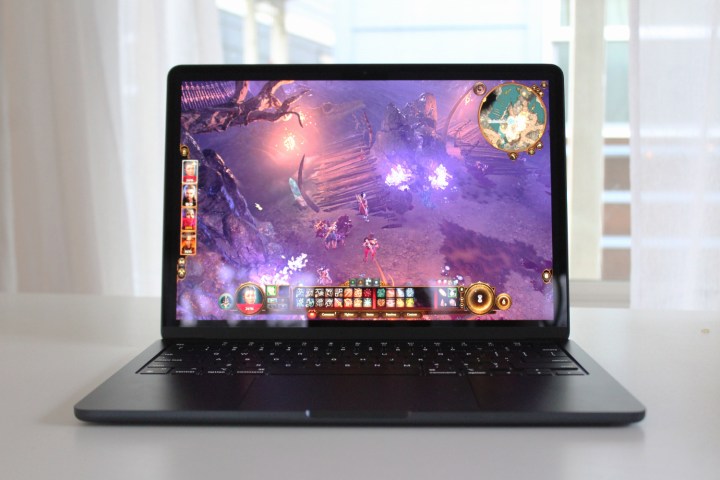 Baldur
Baldur
While not a dedicated gaming machine, the M3 MacBook Air’s enhanced GPU allows for playable frame rates in demanding titles like Baldur’s Gate 3 and Resident Evil 4 with appropriate settings adjustments. This level of gaming performance in a passively cooled, thin-and-light laptop is impressive.
Exceptional Battery Life
The M3 MacBook Air inherits the exceptional battery life characteristic of MacBooks. Achieving over 19.5 hours in a light web browsing test, it significantly outlasts Windows competitors. Crucially, performance remains consistent even when unplugged.
Webcam and Audio
The 1080p webcam and speaker system provide a good video conferencing and media consumption experience. The 15-inch model boasts a six-speaker setup, offering richer audio compared to the 13-inch model’s four-speaker configuration.
13-inch vs. 15-inch MacBook Air
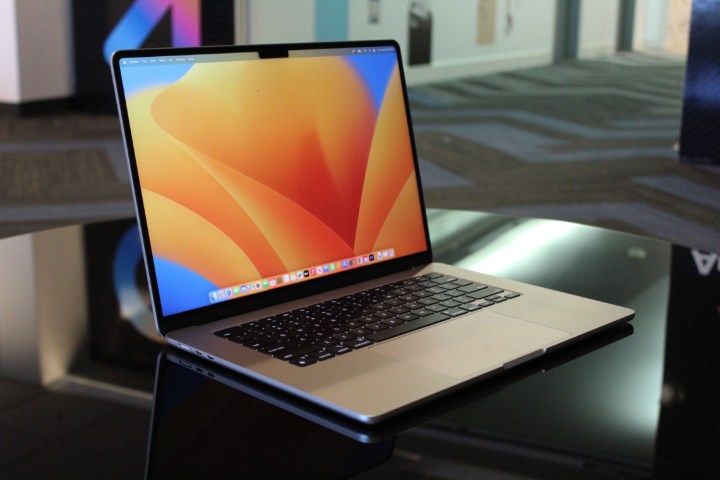 Apple
Apple
The choice between the 13-inch and 15-inch models depends on individual needs. While the 15-inch model offers a larger display and superior speakers, the 13-inch model’s portability and lower price make it a compelling option.
15-inch MacBook Air vs. 14-inch MacBook Pro
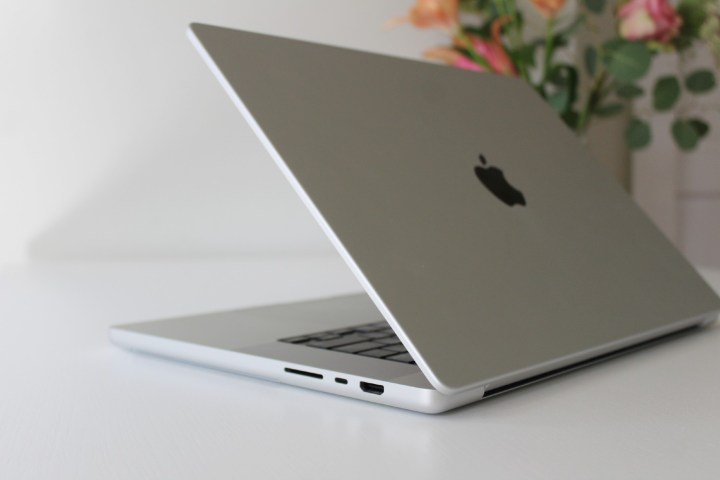 The new MacBook Pro seen from the side.
The new MacBook Pro seen from the side.
The M4 MacBook Pro, with its superior performance, display, port selection, and webcam, presents a strong alternative to the 15-inch M3 MacBook Air for a slightly higher price. However, the M4 MacBook Air’s eventual arrival could shift this dynamic.
Conclusion: Is the M3 MacBook Air Still Worth Buying?
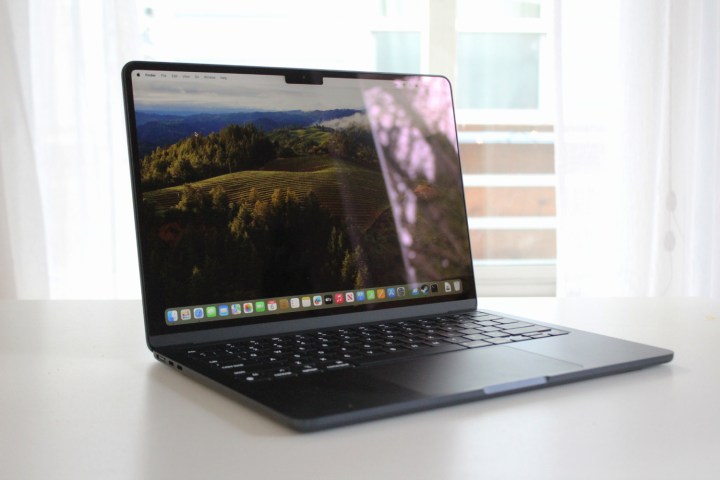 The M3 MacBook Air in front of a window.
The M3 MacBook Air in front of a window.
The M3 MacBook Air isn’t a must-have upgrade for M2 owners. However, for those with older MacBooks or considering switching from Windows, it offers compelling value. The enhanced GPU performance, improved dual-monitor support, and exceptional battery life make it a top contender. If GPU performance isn’t a priority, the M2 model remains a cost-effective alternative. Ultimately, the M3 MacBook Air continues to be a highly recommended laptop for a wide range of users.



